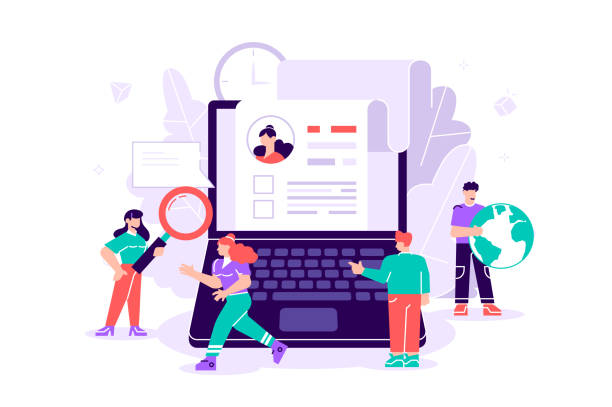The Importance and Necessity of Multilingual Website Design in the Digital Age
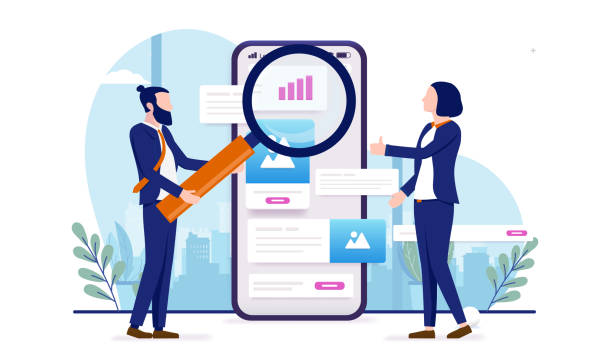
In today’s world, where geographical boundaries have blurred due to the internet, #multilingual website design is no longer a luxury, but an unavoidable necessity for any business that dreams of expanding and reaching global markets.
A website available in only one language literally deprives itself of a huge segment of potential audiences.
Imagine a visitor from Japan or Germany looking for your product or service; if your website is only in Persian, they will likely leave immediately and go to competitors who offer their content in their native language.
This is where the importance of web design becomes widely and internationally apparent.
A #multicultural portal not only builds audience trust but also demonstrates your respect for cultural and linguistic diversity.
This approach provides global accessibility and allows businesses to convey their message directly and in a language that the audience feels comfortable with, to the whole world.
Ultimately, investing in a multilingual website not only offers significant financial returns but also greatly contributes to your #international reputation and #branding.
This strategic decision keeps you a step ahead in global competition and opens up new horizons for growth and development.
Do you dream of a thriving online store but don’t know where to start?
Rasawob is your comprehensive solution for e-commerce website design.
✅ Attractive and user-friendly design
✅ Increased sales and revenue⚡ Get Free Consultation
Strategic Advantages of Multilingual Website Development for Business Growth

Developing a multilingual website is more than a simple technical change; it’s a strategic step to penetrate new markets and significantly increase your audience.
The first and perhaps most important advantage is expanding the reach to global audiences.
By providing content in multiple languages, you can attract customers who were previously unable to access your products or services due to language barriers.
This directly leads to increased website traffic and, consequently, increased sales and revenue.
Secondly, Search Engine Optimization (SEO) for multilingual websites is a powerful competitive advantage.
Search engines like Google favor multilingual content, and with the correct use of hreflang tags and appropriate URL structures, your website can rank higher in search results for various languages.
This means greater visibility and attracting higher quality organic traffic.
Thirdly, building a multilingual website enhances your brand credibility internationally.
Showing that you care about your customers worldwide and are willing to invest in their convenience creates a positive image for your brand.
This is especially crucial for companies planning to enter export markets.
Finally, by better understanding the needs of audiences from different cultures, you can better tailor your #marketing strategies and establish more effective communication with them.
This analytical and data-driven approach not only increases customers but also contributes to their loyalty.
Key Challenges in Designing and Implementing a Multilingual Website

Multilingual website design, although offering countless advantages, also comes with numerous technical, linguistic, and cultural challenges that require precise planning and specialized execution.
One of the biggest challenges is content management.
Simply translating texts is not enough; content must be localized to align with cultural nuances, local idioms, and even units of measurement and currency of each region.
This localization process goes beyond mere translation and requires a deep understanding of the target market.
Another challenge involves technical issues related to multilingual SEO.
Choosing the right URL structure (subdomain, subdirectory, or separate domain), correctly implementing hreflang tags for search engines, and ensuring that each language version is properly identified and indexed by crawlers, requires specialized knowledge.
Furthermore, selecting a suitable Content Management System (CMS) that fully supports multilingual capabilities is crucial.
Some CMSs, such as WordPress with plugins like WPML or Polylang, or Drupal and Joomla, are designed for this purpose, but each has its own complexities.
Maintaining and updating content in multiple languages can also be time-consuming and costly.
Finally, issues related to User Interface (UI) and User Experience (UX) design must also be considered.
Text direction (right-to-left for Persian/Arabic, left-to-right for English), fonts, colors, and images must be adjusted to suit different cultures to provide a smooth and pleasant user experience for all visitors.
| URL Approach | Example | Advantages | Disadvantages |
|---|---|---|---|
| Subdirectories | example.com/en/page |
Easy setup, domain authority sharing, relatively centralized management. | Requires advanced tools for translation management in CMS, GEO optimization might be somewhat challenging in some cases. |
| Subdomains | en.example.com |
Easier hosting and DNS management, suitable for many languages. | Search engines might consider them separate sites (requires stronger internal linking), requires separate SSL certificates. |
| Country Code Top-Level Domains (ccTLDs) | example.fr |
Best option for regional SEO, high authority in the target country, local data privacy. | Expensive (purchasing and maintaining multiple domains), more complexity in management and maintenance, requires multiple SSL certificates. |
Technical Implementation Methods for Efficient Multilingual Websites
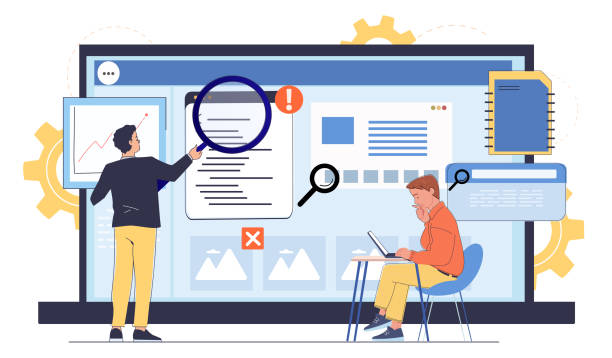
When undertaking multilingual website design, choosing the appropriate technical implementation method is of paramount importance.
This decision directly impacts not only the user experience but also the site’s performance in search engines (SEO).
There are three main methods for managing different language versions of a website: using subdirectories, subdomains, and country code top-level domains (ccTLDs).
Subdirectories (e.g., example.com/en/ or example.com/fa/) are typically the simplest and most common method.
They reside within the main domain, which helps share the main domain’s authority and somewhat simplifies SEO management.
On the other hand, subdomains (e.g., en.example.com or fa.example.com) allow for greater logical separation and can even be hosted on separate servers, which is useful for large projects with differing hosting needs.
However, search engines might treat them as relatively independent entities.
The third option, using country code top-level domains (ccTLDs), such as example.co.uk or example.de, are considered the strongest geographical signal for search engines.
This method is ideal for businesses targeting very specific and local markets in different countries.
With this in mind, managing multiple domains and potentially needing to build links for each separately can increase complexity and cost.
Regardless of the URL structure chosen, correctly implementing hreflang tags is crucial.
These tags inform search engines which version of a page is suitable for which language and geographical region, preventing duplicate content issues.
Google’s guide to hreflang is an excellent educational resource in this area.
Additionally, using a powerful Content Management System (CMS) that supports multilingual capabilities natively or through efficient plugins can significantly facilitate the multilingual website design process and its maintenance.
Are you dissatisfied with the low visitor-to-customer conversion rate on your e-commerce site?
With professional e-commerce website design by Rasawob, solve this problem forever!
✅ Increase visitor-to-customer conversion rates
✅ Create an excellent user experience and build customer trust
⚡ Get Free Consultation
Content Translation and Localization Beyond Words
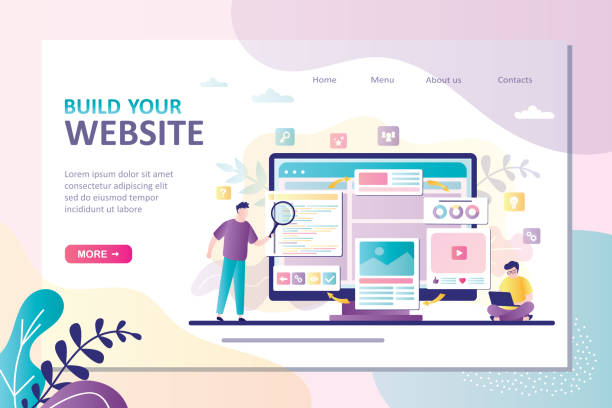
One of the most important pillars of successful multilingual website design is not merely the translation of words, but the deeper and more comprehensive process of content localization.
Translation is only a small piece of this puzzle; localization means adapting the content entirely to the culture, values, idioms, and even the sense of humor and customs of the target audience in each geographical region.
For example, an image that has a positive meaning in one culture might cause misunderstanding or even be considered offensive in another.
This is where the role of localization specialists, not just translators, becomes prominent.
They pay attention to subtle details such as units of measurement (metric versus imperial), date and time formats, phone numbers, currency, and even colors and symbols.
Questionable content or incorrectly translated content can seriously damage your brand’s credibility and lead to audience distrust.
A fundamental guideline is never to rely solely on machine translation; although tools like Google Translate can be useful for general understanding, for website content that directly interacts with customers, professional native translators who are fully proficient not only in the language but also in the target culture should be used.
This process includes keyword research in each language, optimizing meta descriptions and titles for local search engines, and ensuring that all visual and textual elements are consistent with the target community.
Localization is an investment that yields significant returns and provides a more personalized and authentic user experience for visitors.
This aspect of multilingual website development is so vital that it should not be overlooked.
SEO Optimization for Multilingual Websites and Increased Visibility

Search Engine Optimization (SEO) for a multilingual website goes beyond traditional SEO and requires a specialized approach.
The main goal is to ensure that search engines serve the correct language version to users in the appropriate geographical regions.
One of the most important factors in this regard is the correct use of the hreflang tag.
These tags are placed in the HTML page’s <head> section and tell search engines which language versions of a page are available and for which geographical regions they are targeted.
Ignoring these tags can lead to duplicate content issues that harm the site’s ranking.
In addition to hreflang, choosing the appropriate URL structure (subdirectory, subdomain, or ccTLD) as previously explained, plays a key role in signaling to search engines.
Each of these structures has its advantages and disadvantages, and the choice should be made based on the strategy and goals of multilingual website design.
Keyword research should also be conducted separately for each language and target market.
Direct translation of keywords is usually not sufficient, as search phrases, idioms, and even user intent may differ across languages and cultures.
Using local keyword research tools and collaborating with localization specialists can help identify high-potential keywords.
Internal and external linking should also be considered.
Internal links should point to the correct language versions of pages, and external links pointing to your site can be purposefully attracted from websites relevant to each language and geographical region to increase the site’s local authority.
Optimizing site loading speed for users worldwide, as well as ensuring responsive design for various devices, are other important factors for multilingual SEO.
These tips provide comprehensive guidance for achieving the highest visibility in search engines.
The Role of User Experience (UX) in Multilingual Website Success
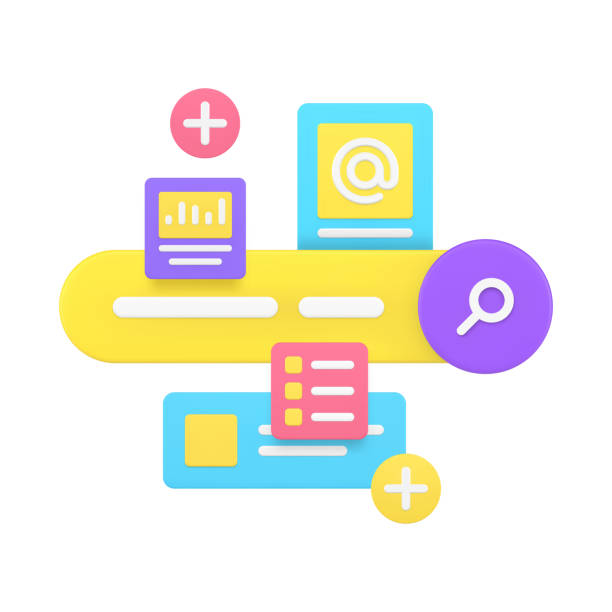
User Experience (UX) in multilingual website design is of tremendous importance and can make the difference between a successful and an inefficient site.
A multilingual website is truly effective only when users in every language and culture can easily interact with it and fulfill their needs.
The first and most important aspect of UX is the language selection mechanism.
This option must be clearly visible and accessible, usually in the header or footer of the site, and often displayed as a dropdown menu or country flags.
Avoid using flags to represent languages, as language and country are different (e.g., Spanish is spoken in multiple countries).
After selecting the language, the website should load quickly in that language, and all content, including texts, images, videos, and even navigation elements, should be displayed correctly.
Responsive Design, which adapts itself to various devices and screen sizes, is essential for a multilingual website to provide a consistent experience worldwide.
Text Direction is also a crucial factor; for languages like Persian and Arabic that are read from right-to-left (RTL), the entire page layout, including menus, columns, and forms, must change to provide a natural user experience.
Fonts must be suitable for each language and ensure that special characters are displayed correctly.
Page Load Speed is very important globally.
Using Content Delivery Networks (CDNs) to host static content on servers closer to users, can significantly increase speed and provide a better user experience.
Finally, user testing with native speakers of each language, to identify and resolve potential UX issues before public launch, is an analytical and vital step.
| UX Element | Importance Explanation | Best Implementation Practice |
|---|---|---|
| Language Selection | Must be quickly findable and usable for the user to access their preferred language. | Language name (e.g., “English”) instead of flags, in the header or footer, along with automatic browser language detection. |
| Text Direction (RTL/LTR) | Very important for languages like Persian or Arabic for readability and user comfort. | Using appropriate CSS and HTML to change the direction of all page elements. |
| Font and Typography | Ensuring text readability and aesthetics in all languages. | Using fonts that support all target language characters and have web usage licenses. |
| Images and Videos | Must be culturally appropriate and convey the message correctly. | Using localized or international visual content that is understandable across all cultures. |
Continuous Maintenance and Updates for Multilingual Websites

Multilingual website design is merely the starting point; its continuous maintenance and updating are essential to preserve its efficiency, security, and connection with global audiences.
This process involves several important aspects that need regular attention.
The first aspect is managing new translations and localizations.
Every time new content is added to the website or existing content is updated, it must be ensured that all its language versions are also correctly translated and localized.
This includes page texts, products, news, blog articles, and even system messages and site errors.
To facilitate this, using a Translation Management System (TMS) or a CMS with powerful multilingual capabilities can function in an educational and effective manner.
These tools help coordinate between translators, review translation quality, and track localization status.
The second aspect is continuous SEO optimization.
Search engine algorithms are constantly changing, and competition in global markets is high.
Therefore, monitoring keywords, rankings, organic traffic for each language, and updating SEO strategies based on analytical data is crucial.
This includes updating hreflang tags, improving site speed, and optimizing content for local searches.
The third aspect is security and technical maintenance.
A multilingual website, like any website, needs security updates, regular backups, and server performance monitoring.
Ensuring the compatibility of plugins and themes with new CMS and PHP versions is also important to prevent technical issues.
These steps ensure that your website remains accessible, secure, and up-to-date, providing a positive user experience for all its global visitors.
This guidance helps you manage your site effectively.
Did you know that poor online store design can drive away up to 70% of your potential customers? Rasawob revolutionizes your sales with professional and user-friendly e-commerce website design.
✅ Significant increase in sales and revenue
✅ Full optimization for search engines and mobile
⚡ [Get Free Consultation from Rasawob]
Case Study: Successful and Inspiring Multilingual Websites

To gain a deeper understanding of the potential of multilingual website design and how to implement it successfully, examining a few real and inspiring examples can be very helpful.
These successful stories demonstrate how various companies have managed to penetrate global markets and establish effective communication with their international audiences by using multilingual websites.
One of the best examples is the IKEA website.
This Swedish company, with a presence in dozens of countries and offering localized websites in different languages and currencies, is an excellent example of comprehensive localization.
IKEA not only introduces its products in the local language of each country but also adjusts its visual and textual content to suit each market, considering cultural differences in interior design and lifestyle.
This approach provides a personalized user experience for customers and has greatly contributed to the brand’s global success.
Another example is Airbnb, which is available in over 60 languages.
This accommodation platform has well understood the importance of localization.
Not only are the user interface and main content of the site translated, but customer support is also provided in multiple languages.
Additionally, the ability to search and filter by host language helps users have a more comfortable and reliable experience.
This multilingual website has not only helped attract users from all over the world but has also gained their trust.
A lesser-known but useful example is the websites of major international universities like Cambridge University or Harvard University.
These universities usually have multilingual versions to attract international students and researchers from around the world.
They provide information about courses, admission requirements, and student life in various languages, which itself demonstrates their commitment to diversity and audience reach.
These examples show how multilingual websites can become powerful tools for expanding reach and establishing effective communication with global audiences.
This entertaining yet educational approach.
Future Trends and the Impact of Artificial Intelligence on Multilingual Website Design

The future of multilingual website design will be heavily influenced by advancements in Artificial Intelligence (AI) and Machine Learning.
These technologies are revolutionizing how multilingual content is created, managed, and optimized, providing new possibilities for websites.
One of the most important areas is Neural Machine Translation (NMT), which has significantly improved the quality of automatic translations.
Although human translation is still considered the gold standard, NMT can be used as a powerful tool for initial drafts, translating vast amounts of content at high speed, or even providing real-time translations for customer support.
This technology is particularly explanatory and efficient for dynamic and news content that requires rapid updates.
In addition to translation, AI can play a significant role in personalizing the user experience on multilingual websites.
By analyzing user behavior data, AI can automatically provide relevant content and language- and culture-specific suggestions to visitors.
This includes displaying products relevant to regional preferences, adjusting advertisements based on language and geographical location, and even suggesting the best language for the user based on their IP or browser settings.
These capabilities allow websites to communicate with their audiences in an analytical and intelligent manner.
Other trends include AI-powered SEO optimization, where algorithms can suggest keywords, content structure, and even writing tone for optimization in local search engines.
Also, multilingual conversational bots and voice assistants capable of responding in various languages will play an important role in customer communication and service delivery.
These developments indicate that multilingual website design will be smarter, more personalized, and more efficient in the future, providing businesses with more powerful tools.
These thought-provoking trends promise an exciting future.
Frequently Asked Questions
| Question | Answer |
|---|---|
| What is multilingual website design? | It is the design of a website whose content is available to users in several different languages, so that users can select their preferred language. |
| Why is a multilingual site important? | To reach international audiences, increase website traffic, improve user experience for non-Persian speaking visitors, and expand business into global markets. |
| What are the benefits of having a multilingual site? | Increased international SEO, attracting new customers from different countries, enhancing business credibility and professionalism, and reducing bounce rate by providing understandable content. |
| What are the implementation methods for a multilingual site? | Using subfolders (e.g., example.com/en/), subdomains (e.g., en.example.com), or separate top-level domains for each language (e.g., example.com and example.de). |
| Which URL structure is best for international SEO? | Subdirectories (like example.com/en/) are often preferred for SEO due to the consolidation of main domain authority, although each method has its advantages and disadvantages. |
| How does a multilingual site affect SEO? | By providing content in different languages, the site appears in local search results for those languages, click-through rates and traffic increase, and overall domain authority improves. Correct use of hreflang tags is very important. |
| How is content translation managed? | Professional translators, machine translation tools (with human editing), or Content Management Systems (CMS) with built-in multilingual capabilities or relevant plugins can be used. |
| What are the common challenges in multilingual site design? | Managing translated content, maintaining design consistency across different languages, compatibility with right-to-left (RTL) languages like Persian and Arabic, optimizing SEO for each language, and choosing the appropriate URL structure. |
| How do I manage text direction (LTR/RTL) on a multilingual site? | For right-to-left languages (like Persian), you need to apply specific CSS styles to change text direction, element layout, and table direction. This is often done using the `direction: rtl;` property and other related settings. |
| How can users change the site language? | Usually by using a button, dropdown menu, or language selection widget clearly placed in the site’s header or footer. Automatic detection of the user’s browser language and suggesting a language change is also common. |
And other services of Rasawob Advertising Agency in the field of advertising:
Smart Website Development: A professional solution for increasing click-through rates with a focus on intelligent data analysis.
Smart Content Strategy: Revolutionize website traffic with the help of marketing automation.
Smart Marketplace: Designed for businesses looking to manage campaigns through the use of real data.
Smart Social Media: A professional solution for analyzing customer behavior with a focus on intelligent data analysis.
Smart Digital Advertising: An effective tool for attracting customers with the help of attractive UI design.
And over a hundred other services in the field of internet advertising, advertising consulting, and organizational solutions.
Internet Advertising | Advertising Strategy | Advertorial
? Are you ready to transform your business in the digital space? Rasawob Afarin Digital Marketing Agency, by providing comprehensive and specialized services, is your guide on the path to online brilliance. With years of experience, we help businesses establish a powerful and effective presence in the digital world.
From Search Engine Optimization (SEO) strategies and content marketing to responsive website design and running targeted advertising campaigns, we cover all your digital needs. Our goal is to increase your visibility, attract more customers, and ultimately ensure the sustainable growth of your business.
By trusting the expertise of the Rasawob Afarin team, you can confidently entrust the digital future of your business to us. We are committed to achieving the best results for you and ensuring that your brand shines in today’s competitive landscape. With Rasawob Afarin, take a strong step towards great successes.
📍 Tehran, Mirdamad Street, next to Bank Markazi, Kazeroon Janubi Alley, Ramin Alley, No. 6

